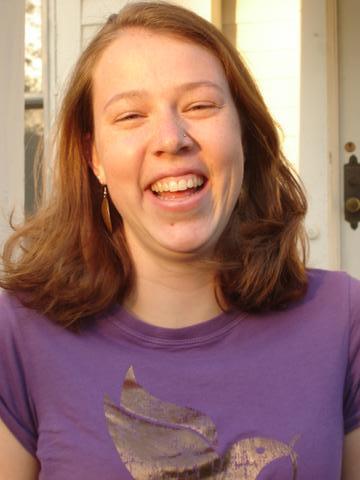Planes cambian
Hola a tod@s, espero que este mensaje les encuentre bien. Bueno voy a saltar un poco de lo que escribí en ingles, porque fue demasiado. En general subimos muy rápido por el norte de Peru por Huaraz, donde la lluvia no nos dejo hacer mucho treking. Después de dos noches y un día entero de viaje en bus entramos a Ecuador y fuimos a un pueblito que se llama Vilcabamba. Nos quedamos en un hostal hermoso con una piscina rodeada de plantas tropicales en medio de las montañas, fue espectacular. De allí fuimos a Loja, donde no nos pensábamos quedar, pero el grupo Bacilos (cantan las canciones “Caraluna” y “Tabaco y Chanell”) iban a dar un concierto y todavía habían entradas. Entonces nos quedamos y valió la pena, el concierto fue buenísimo. Desde Loja viajamos a Cuenca pero otra ves con la lluvia no pudimos hacer mucho. Desde Cuenca salimos a Quito para pasar solo un día. Tengo que regresar a Ecuador cuando no sea la temporada de lluvia, y también visitar la costa, porque sentí que no vi casi nada.
Entonces cambiaron los planes. Cuando salimos de viaje pensábamos cruzar de Peru a Bazil e ir por las amazonas a Venezuela. Pero conocimos tanta gente que nos dijo que teníamos que ir a Colombia, entonces aquí estamos! Desde Quito salimos a Pasto, Colombia y desde el día que cruzamos nos enamoramos del país. Tomamos el bus a Popayán, un camino espectacular. Nunca en mi vida había visto montañas como esas, un paisaje increíble. Pasamos algunos días en Popayán, una ciudad muy bonita y viajamos al pueblo de Silvia donde cada martes bajan los indígenas de la región para el día del mercado. Fue muy bonito ver como han conservado sus tradiciones. De Popayán fuimos a Cali, la capital de la salsa. Salimos a bailar a la avenida sexta, pero como no estuvimos para un fin de semana no pudimos ver de verdad como son las noches de fiesta en Cali. De Cali fuimos A Medellín donde vimos la exhibición de Botero en el museo de arte. Como no teníamos mucho tiempo sentíamos que estábamos volando de ciudad a ciudad sin hacer una conexión con la gente del lugar. Y los otros turistas que conocíamos en los hostales eran un horror. Casi todos venían por las drogas y las prostitutas. En un hostal un chico en la misma frase me pregunto que hora era y cuanto costaba la cocaína por acá. No lo pude creer. Era una desgracia ver como los extranjeros venían a dañar más al país. Sentíamos que aunque estos extranjeros estaban en Colombia no tenían idea de donde estaban, de la situación socio-política. Y también sentía que la Colombia que estábamos viendo no era la que entendía por las historias de mis amigos colombianos o de mis padres que trabajan en el trabajo de solidaridad con Colombia. Y entonces llegamos a Cartagena muy desilusionadas y no era porque no teníamos contactos de gente que nos podía mostrar Colombia, sino que íbamos viajando tan rápido y como fue de último momento que decidimos ir a Colombia, so pudimos hacer los contactos antes. Pero en fin, llegamos a Cartagena y pudimos encontrar un amigo de Marie que es de Cartagena que conoció en Francia cuando estuvo estudiando allá. El es parte de una compañía de danza que se llama El Colegio del Cuerpo que trabaja con chicos de comunidades marginales de Cartagena y usan una metodología de empoderarse y respeto que es increíble. Y entonces pasamos una semana con el y su novia y sus amigos discutiendo política, hablando de racismo en Colombia en comparación a EEUU, de la inigualdad económica. Fue una semana increíble donde en verdad sentí una conexión humana, la formación de una amistad muy especial. Nos mostraron otro entendimiento de Colombia, compartieron su trabajo y sus experiencias con nosotras. Ella hace documentales y trabajo con un grupo de mujeres que se llama Liga de Mujeres Desplazadas y nos mostró las documentales que hizo sobre el trabajo de las mujeres. Fuimos a ver un concierto de Petrona Martinez, una cantante muy famosa de Palenque que canta música folklórica de Colombia. La pasamos supero bien en Cartagena, encontramos una comunidad de gente joven que están viviendo sus vidas tratando de cambiar las injusticias en el mundo poco a poco. No nos queríamos ir de Cartagena, pero en fin teníamos que irnos. Salimos de Cartagena a Santa Marta donde fuimos al Parque Tayrona. Un lugar espectacular con una combinación de playas hermosas y una selva tropical. Celebramos el cumpleaños de mariela allí con ron y música. Pero el parque queda en una región controlada por los paramilitares y no deje de pensar que dentro de tanta maravilla existía tanta violencia y opresión. En este país tan increíble hay tanta violencia y hay tantos que no pueden regresar a su país y que no pueden ver la hermosura que yo he visto en estas ultimas semanas, que no pueden ver sus familias. Sé que tengo que regresar a Colombia muy pronto. Esta visita me ha mostrado la superficie, pero sé que tengo que regresar y haber más conexiones y seguir el trabajo de la solidaridad en EEUU.
Mañana cruzamos a Venezuela por una semana antes de que regrese a Chicago. Este viaje ha sido increíble y seguiré procesando mis experiencias después que termine. Bueno entonces los dejo con esto y les cuento de Venezuela en el próximo mensaje.
Los quiero mucho.
Paz, Juanita.

